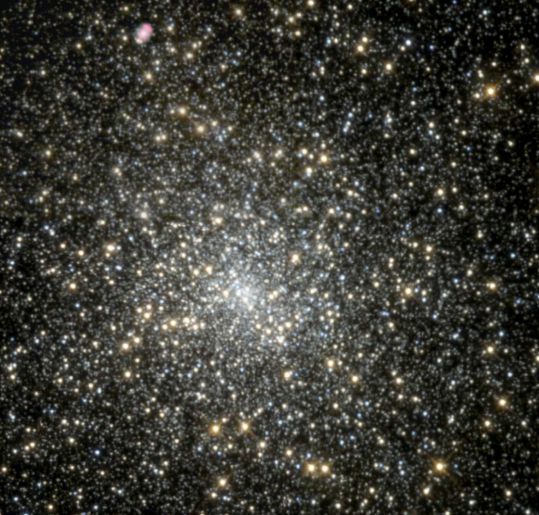Explanation: Life might get dull at the core of M15 but the sky would always be bright with stars! In fact, only 40,000 light-years away in the constellation Pegasus, M15 is one of the most densely packed globular star clusters in our Milky Way Galaxy. This stunning Hubble Space Telescope image of M15 shows thousands of individual stars across the central 10 or so light-years of the cluster, also cataloged as NGC 7078. Yet even the Hubble's sharp vision can't clearly separate the stars at this cluster's core. Globular star clusters harbor from a hundred thousand up to a million stars and roam the Milky Way halo. Like most globulars, M15 is filled with ancient stars, about 12 billion years old compared to the Sun's estimated 4.5 billion years. Its cool red giant stars appear yellowish in this color composite image. Unlike most globulars, M15 displays a planetary nebula, the briefly visible gaseous shroud of a dying star. Can you pick it out? Cataloged as Kuestner 648, M15's planetary nebula is the round pinkish cloud at the upper left.
1999 2000 2001 2002 2003 2004 2005 2006 2007 2008 2009 2010 2011 2012 2013 2014 2015 2016 2017 2018 2019 2020 2021 2022 2023 2024 2025 |
Yanvar' Fevral' Mart Aprel' Mai Iyun' Iyul' Avgust Sentyabr' Oktyabr' Noyabr' Dekabr' |
NASA Web Site Statements, Warnings, and Disclaimers
NASA Official: Jay Norris. Specific rights apply.
A service of: LHEA at NASA / GSFC
& Michigan Tech. U.
|
Publikacii s klyuchevymi slovami:
star cluster - M 15 - Planetarnaya tumannost' - belyi karlik - M 1 - planetary nebula - MyCn18 - star - cluster - globular cluster - Sharovoe skoplenie
Publikacii so slovami: star cluster - M 15 - Planetarnaya tumannost' - belyi karlik - M 1 - planetary nebula - MyCn18 - star - cluster - globular cluster - Sharovoe skoplenie | |
Sm. takzhe:
Vse publikacii na tu zhe temu >> | |
